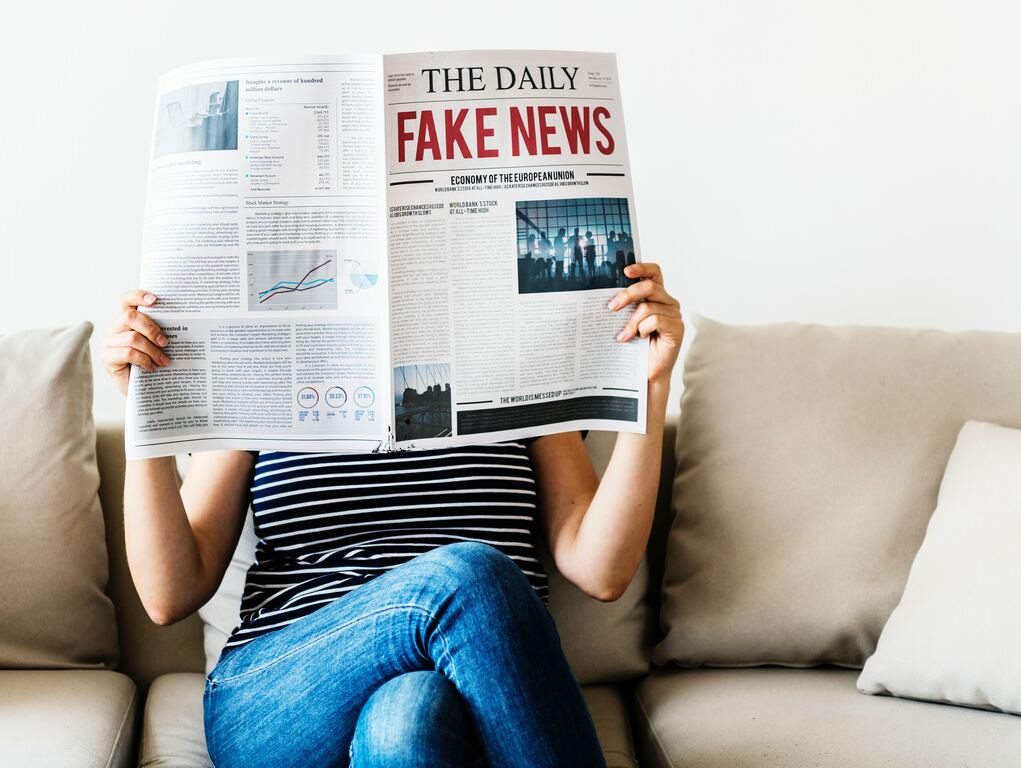Fake News: No big deal?

Since his election as the 45th President of the United States, headlines about Donald Trump are dominating the media. Along with Trump, one term in particular has become a buzzword: Fake News. However, studies show that the hype is creating false expectations which do not correspond with reality. Still, fake news is a serious issue in the information age.
Is really everything we read in the newspaper and on online platforms true? In times where the term "Fake News" is being used on a daily basis, uncertainty is spreading. Or one might at least think so. According to the Reuters Digital News Report 2018 (link), 54% of the Swiss-Germans and 48% of the French-speaking people in Switzerland rate the Swiss media as trustworthy and good. On the other hand, only 22% of the Swiss believe in the news they read on social media.
A positive result for the Swiss media landscape. And an important sign. Because Fake News, meaning intentional disinformation, threatens public communication, which is crucial for our democratic society.
Is the fear of Fake News unjustified then?
In his recently published study (link), Brendan Nyhan, Professor of Public Policy at the University of Michigan, also comes to the conclusion that our fears regarding Fake News are exaggerated, and that for example, Fake News played a far smaller role in the run-up to the presidential elections in the USA than previously assumed. But what is of particular interest is, that the constant confrontation with the topic of Fake News and warnings about it have led readers to start questioning the legitimacy of the media.
False security
From this perspective, one might think that fake news is not a real problem. Wrong information, also intentionally used, exists since the beginning of mankind and is not a new phenomenon. But while the spread of false information was still relatively manageable and corrective action could be taken if necessary, digitization operates as an unmanageable catalyst in the spread of Fake News. Especially on social media platforms, Fake News is popping up like daisies. The reason is obvious. Low barriers of entry, widespread distribution and - Social Media are emotional media. They are optimised for rapid, impulsive reactions and their algorithms prefer highly emotional content.
Danger lies in the dark
But we do not only find Fake News on Social Media: disinformation grows where we do not have a public sphere - in private communities, closed groups - and it is spread via WhatsApp and the darknet. So danger sometimes literally lies in the dark. Since this also makes the access to this data difficult, current communication research can only investigate fake news on public platforms - and therefore does not adequately represent reality.
Image and reputation matter
Looking at this current development, we become aware of the paradox: Fake News are a matter of fact, even if they are less relevant than the media coverage suggests. They are also relevant for companies, organisations and executives. Targeted misinformation from or about one's own company can damage reputation and business, and it is a burden. Coca-Cola and Pepsi, for example, were victims of political advertising in the pre-Christmas period of 2018 with fake posters (link).
Disinformation is difficult to control. But one's own image and reputation can be. Transparent and authentic communication with stakeholders creates trust and is the basis for solid relationships. In addition, crisis prevention can counteract possible reputational damage through Fake News. Those who invest in maintaining their image and reputation can do something about Fake News and will not be overwhelmed by it.